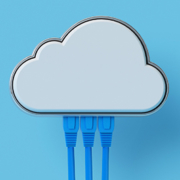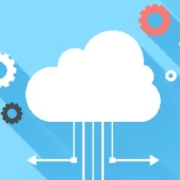From Obscurity to Ubiquity: How the Cloud Became A Tech Essential
The cloud is a funny thing. Its nebulous nomenclature has caused some confusion for the tech-challenged. For these folks, videos of their kids’ third birthday party were just hovering in the atmosphere, ready to rain down data on anyone who looked up.
But for those who early on envisioned the possibilities of the coming technological climate change (not least of whom was Jim Carrey in The Cable Guy), cloud services were the future.
Make no mistake. The cloud is the internet. Or rather, it’s the infrastructure of the internet. If the internet is the global network of connected computers and devices – the information superhighway – then the cloud is the transfer station.
If you want to perform an action online, such as watching that clip from The Cable Guy, the internet gives you access to YouTube’s data center which houses the file.
You don’t get to keep the file. You just access it for 23 seconds. The transfer of data packets to your device from the hosting in the data center takes place in “the cloud”.
Since the advent of cloud technology, businesses have been clamoring for cloud services to help improve their workflow, increase their profits and compete in the marketplace.
Related: The Cloud: Why It’s More Important than Ever
The Intergalactic Computer Network
This is how it was described by J. C. R. Licklider back in 1963. “Lick” and his colleagues set out to find out a way to time-share computer processing. (You can read his memo here.) The vision was for a future that connected everyone, anywhere, at any time.
Eventually, this vision came true. Lick, however, died in 1990 and neither saw the full potential of the modern internet nor the satellite scene from The Cable Guy.
Thanks, Amazon
Two major things happened in the subsequent years. Salesforce, a sales and marketing CRM platform, offered one of the first instances of cloud-based software in 1999. This would ultimately become commonplace, and branded as Software as a Service, or SaaS.
In 2006, Amazon decided to lease out some of its unused computer power to companies looking for cloud services and solutions. This would eventually be known as Infrastructure as a Service, or IaaS.
Between these two ideas, the world of cloud computing exploded.
Related: 5 of the Most Anticipated Technology Trends of 2018
Ownership vs. Rentorship
So, what’s the big deal?
One of the major elements that propelled the cloud’s ubiquity is the concept of renting components. It used to be that only enterprise-level companies could explore top-tier technology to help improve business because the tech was so expensive.
But with SaaS and IaaS on the table, everything changed. Suddenly, businesses were able to lease technological capabilities for a flat-rate monthly fee using only what they needed instead of putting down enormous capital expenses. Now, the little guys could compete with the big boys.
Learn more: Work More Efficiently from Anywhere with the Cloud
The Internet of Things
The Internet of Things (IoT) is the latest and greatest movement in cloud computing. Think about it: You hear everyday of new things that have “smart connect” capabilities, like football helmets, diapers and refrigerators.
This access to information can help you determine from afar how hard a quarterback was hit, how full a diaper is and how empty a fridge is.
From a consumer standpoint, the effects are obvious. You can track and upload data to the cloud and effectively manage it using real-time analytics.
IoT is still an evolving industry, and it’s only a matter of time before it becomes a regular part of business strategy. But for now, business-grade cloud computing solutions are faster, more powerful, and more practical than the IoT.
In short, cloud services can give you an incredible opportunity to propel your business and help you scale at the speed you need.
To talk about cloud services and your business, call GB Tech.























